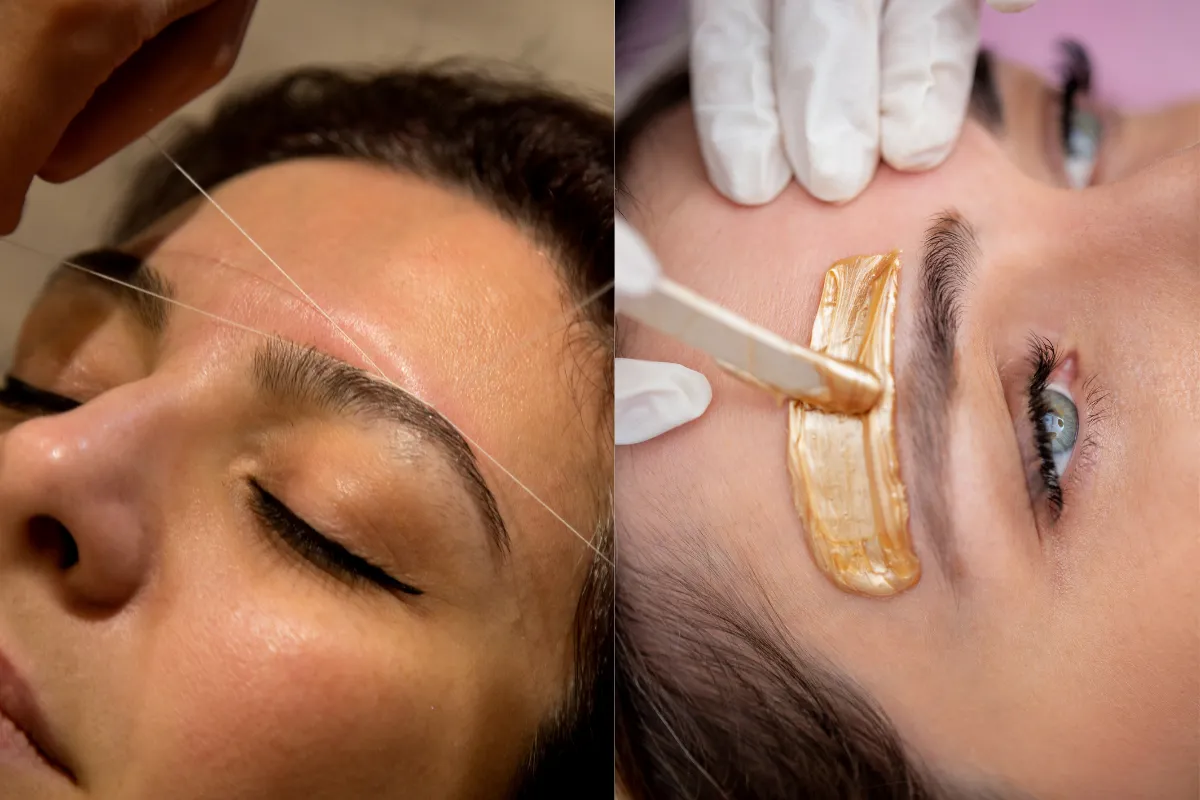
Threading vs Waxing: Which Hair Removal Method is Best?
Hair removal is a personal choice, and with so many options available, it can be tricky to decide which method suits you best. Among the most popular techniques are threading and waxing. Each offers unique benefits, but which one is truly better for your skin, convenience, and long-term results?
In this blog, we’ll compare threading vs waxing in detail—exploring how they work, their pros and cons, and which skin types they’re best suited for. Whether you're a regular at the salon or new to hair removal, this guide will help you make an informed decision.
Understanding the Basics
What Is Threading?
Threading is an ancient hair removal technique originating from South Asia and the Middle East. It involves using a thin cotton or polyester thread, which is twisted and rolled over areas of unwanted hair. As the thread moves, it lifts hair directly from the follicle.
Threading is most commonly used for facial hair—particularly for eyebrows, upper lip, chin, and forehead.
What Is Waxing?
Waxing, on the other hand, involves applying warm or cold wax to the skin and then quickly removing it—along with the hair from the root. Waxing can be used on nearly every part of the body including the face, arms, legs, underarms, and bikini area.

Threading vs Waxing: Key Differences
Let’s break down the main points of comparison between threading and waxing.
1. Precision and Control
Threading:
Threading offers exceptional precision, especially for facial areas like eyebrows. Estheticians can target even the finest hairs and shape brows with great accuracy.
Waxing:
Waxing removes hair in larger patches, making it less precise for small areas like the eyebrows. However, it’s more efficient for larger body areas like arms or legs.
Threading for face, Waxing for body.
2. Pain and Discomfort
Threading:
Threading can be uncomfortable, especially for first-timers. Since each hair is pulled out individually, it may feel more intense—though quick.
Waxing:
Waxing pulls out many hairs at once, causing a quick sting. For most people, the pain subsides quickly, but sensitive areas like the bikini line may feel more discomfort.
Tied – depends on personal pain tolerance.
3. Skin Sensitivity and Irritation
Threading:
Threading is great for people with sensitive skin. It doesn’t involve chemicals or heat, making it less likely to cause redness or breakouts. However, overdoing it can still cause temporary inflammation.
Waxing:
Waxing can irritate sensitive skin, especially if hot wax is used or if skin is exfoliated beforehand. Some waxes also contain fragrances or additives that might cause reactions.
Threading is safer for sensitive skin.
4. Time and Efficiency
Threading:
Threading smaller areas like eyebrows or upper lip is quick—often done in under 10 minutes.
Waxing:
Waxing is faster for larger areas. Full legs or arms can be done within 20–30 minutes.
Threading for small areas, Waxing for large areas.
5. Results and Hair Regrowth
Threading:
Hair usually grows back in 2–4 weeks, and with consistent threading, hair may become finer over time.
Waxing:
Waxing removes hair from the root, so regrowth also takes around 3–4 weeks. Regular waxing can lead to reduced hair density.
Tied – both offer long-lasting results.
6. Cost and Accessibility
Threading:
Usually more affordable for facial areas. Many salons offer threading services at lower prices compared to waxing.
Waxing:
Can be more expensive, especially for full-body services. However, at-home waxing kits offer budget-friendly options.
Threading for facial budget, Waxing for DIY options.
Which Method Is Best for Your Skin Type?
Sensitive Skin: Choose threading to avoid irritation from wax or heat.
Oily or Acne-Prone Skin: Threading won’t clog pores or add oil.
Dry or Normal Skin: Waxing works well but make sure to moisturize afterward.
Thick or Coarse Hair: Waxing is more efficient for removing thicker hair from large areas.
Threading vs Waxing: What the Experts Say
At SK Herbals, our skincare professionals often recommend threading for facial areas due to its precision and minimal impact on the skin. For the body, waxing remains a top choice because of its speed and effectiveness.
The key is to know your skin, understand the area being treated, and choose based on comfort, skin type, and the desired outcome.
Aftercare Tips for Both Methods
No matter which method you choose, proper aftercare ensures your skin stays smooth and healthy:
Avoid sun exposure, makeup, or harsh products for 24 hours.
Apply aloe vera or a soothing lotion to reduce redness.
Exfoliate gently after 2–3 days to prevent ingrown hairs.
Stay hydrated and moisturized.
Final Verdict: Which One Should You Choose?
Go for threading if you want precision, especially for facial areas.
Choose waxing if you need to remove hair from large body areas and prefer quick results.
If you have sensitive skin, threading may be a gentler option.
Want to do it at home? Waxing kits are more accessible.
Ultimately, the choice between threading vs waxing comes down to your skin type, pain tolerance, and area of treatment.